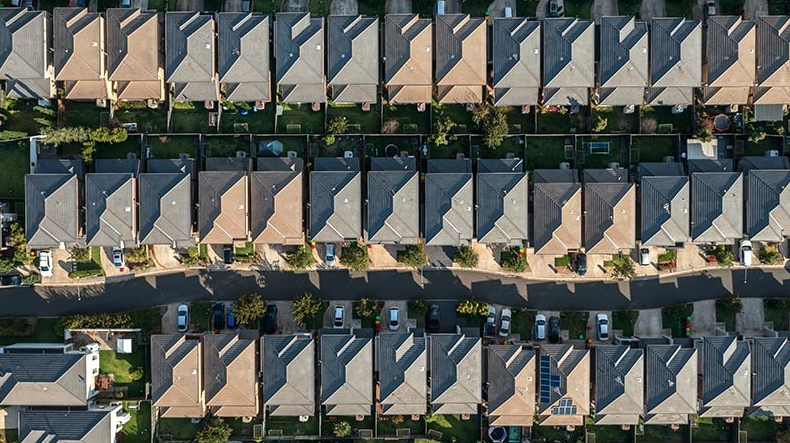New research reveals even a growing number of rich Aussies can’t buy a home
Feb 2024Karen Millers
Categories
Location ReportsMedia releasesNational market updatesPersonal advisersPIPA AdviserPIPA Annual Investor Sentiment SurveysPIPA Member ProfilesPIPA video updatesPIPA webinarsPodcastsProperty advisersProperty newsLatest Articles
Which property cycle are we in?
Rent rises ease but crisis’ link to population density found to be tenuous
Jordan van den Berg: The ‘Robin Hood’ TikToker taking on Australian landlords
Victorian property investors face yet another new property tax as council tests levy
Maureen Pound has lived in her charming Victorian-era house in inner-city Melbourne for the better part of 14 years.
It’s packed with heritage features, in a fantastic location and worth a pretty penny – the stuff of real estate dreams for hopeful househunters.
But despite running her own successful company and earning a salary that ranks her in the top income bracket in Australia, Ms Pound can’t afford to actually own the property.
She’s rented the whole time – and had to lease another property for eight years before that.“I’ve been a renter for 22 years,” Ms Pound, director of virtual assistant provider Global Teams, told news.com.au.“It allows me to live where I want in a house that I couldn’t afford to buy.”
New research released on Wednesday shows Ms Pound is among a growing cohort of financially well-off renters.
A report from the Australian Housing and Urban Research Institute shows nearly a quarter of all renting households in 2021 were in the top income brackets, up sharply from eight per cent in 1996.
Analysing data from the latest Census, experts from Swinburne University were able to uncover signs of long-term structural changes in rental markets, including the rise of tenants raking in salaries of $140,000 per year and above.
Household income needed to buy average Sydney home
Max Phelps, a money coach who runs the mortgage advisory GoldenEggs, said someone on $100,000 would be considered in the top 25 per cent income earners.
“The difficulty is that a salary of $100,000 comes with a borrowing capacity of only $515,000, which is a fraction of the average home price in Australia,” Mr Phelps said.
A couple each bringing in that type of pay pocket would still only be able to get a loan for $1 million, which doesn’t cover the cost of a typical home in major cities.
“In Sydney, our most expensive capital, the average price for a house is now $1.37 million, requiring an outrageous $220,000 household income to be able to afford a loan.”
The ritzier the suburb, the bleaker that situation gets.
For example, a prestige four-bedroom, two-bathroom terrace home finished to a high standard and situated in Sydney’s sought-after Surry Hills is currently on the market with a guide price of $3.4 million.
Repayments on a $2.72 million mortgage, accounting for a 20 per cent deposit and a standard interest rate, would be about $17,175 per month, equating to roughly $3960 per week.
By comparison, an equally impressive four-bedroom, two-bathroom home not far down the road is on offer to cashed-up renters now for $1750 per week.
The difference between buying and renting could therefore be as much as $9590 per month – or a whopping $115,000 per year.
The ever-growing cost of property means many of those on high incomes might not be able to afford to buy where they want to live – or are better off financially if they rent.
The trend of renting property owners
Nicola McDougall is the chair of industry group Property Investment Professionals of Australia and said a trend dubbed ‘rent-vesting’ has become increasingly popular in recent years.
In a nut shell, rent-vesting describes a scenario where someone invests in property – often heavily – but doesn’t buy their own home to live in, choosing to rent instead.
“I personally rent-vested for a number of years after relocating to the Sunshine Coast, which enabled my husband and I to experience different neighbourhoods before deciding where and what to buy as our next home,” Ms McDougall said.
“Rent-vesting has become more popular with long-term property owners, especially among those who may have migrated interstate as it allows them to try before they buy.
“The increase in interstate migration over recent years has been driven by lifestyle factors as much as anything else, especially since many people continue to work remotely or run their businesses from the bush or the beach.”
She might be a renter, but Ms Pound is still a property owner, with a number of real estate investments under her belt.
It seems others are keen to follow suit, with the annual PIPA Investor Sentiment Survey finding 42 per cent of those who put their money into bricks and mortar would consider rent-vesting.
One factor is that even a generous six-figure salary doesn’t stretch quite as far as it did even recently, thanks to the cost-of-living crisis, red-hot inflation and higher interest rates.
It seems others are keen to follow suit, with the annual PIPA Investor Sentiment Survey finding 42 per cent of those who put their money into bricks and mortar would consider rent-vesting.
One factor is that even a generous six-figure salary doesn’t stretch quite as far as it did even recently, thanks to the cost-of-living crisis, red-hot inflation and higher interest rates.
And as Ms Pound explains, there are other bonuses that mean leasing makes better sense.
“The owner fixes everything so I don’t need to worry about maintenance and I get to live in an amazing home that’s two kilometres from the Melbourne CBD.
“And I believe it’s prudent to not live in your biggest financial asset.”
The rise of rich renters is a trend observed elsewhere in the world, with an 82 per cent increase in the number of tenants on high incomes between 2015 and 2020 in the United States.
“This percentage is significantly higher than the rise in overall renters, which was just three per cent during the same time frame,” research by RentCafe found.
“The number of people who could afford to buy but choose to rent reached 2.6 million, and among them, over 3000 have an income of over $1 million.”
Huge shortage of affordable home
The AHURI research also revealed an alarming trend relating to those on the opposite end of the income spectrum, with 82 per cent of renting housings on very low incomes now experiencing extreme affordability stress.
Of the 425,000 renting households in the lowest income brackets, only 77,000 were able to find a home that’s deemed affordable.
The other 348,000 households – or 82 per cent of low-income households – were in housing affordability stress, where they pay more than 30 per cent of their income in rent.
“This is because not all the lowest price rentals are available to be rented by households on the lowest incomes,” research author Margaret Reynolds from Swinburne University said.
“These dwellings are occupied by households on higher incomes, making the shortage of lower priced homes even more acute. Unfortunately, the situation has not improved for lower income renters since the Census was taken.
“In 2022 rents began to increase substantially, leading to what many have termed a ‘rent crisis,’ as migration and mobility returned to pre-Covid levels, placing additional demand pressure on the private rental market.”
This all indicates a shortage of almost 350,000 homes that are affordable and available to those on low incomes.
Huge impact of housing affordability crisis
A report last year from think tank The Grattan Institute painted a grim picture of how “housing is draining the incomes of the poor” as they spend more and more on renting.
It examined the inflation-adjusted incomes for the lowest fifth of households over a several-year period, showing they increased by about 26 per cent between 2003-04 and 2019-20.
But more than half of that was “chewed up by skyrocketing housing costs, with post-housing incomes climbing only 12 per cent”.
In stark contrast, real incomes for the highest fifth of households shot up by 47 per cent – and there was only a modest difference after accounting for housing, with a 43 per cent gain.
“Rising housing costs have dramatically widened the gap between what Australians on high and low incomes can afford,” the report concluded.
“Rising home prices paired with plummeting rates of homeownership are driving up wealth inequalities. If we want to address inequality, we will have to fix housing.”
Originally Published: Shannon Molloy | Geelong Advertiser | 22 February 2024
“Licensed by Copyright Agency. You must not copy this work without permission.”




